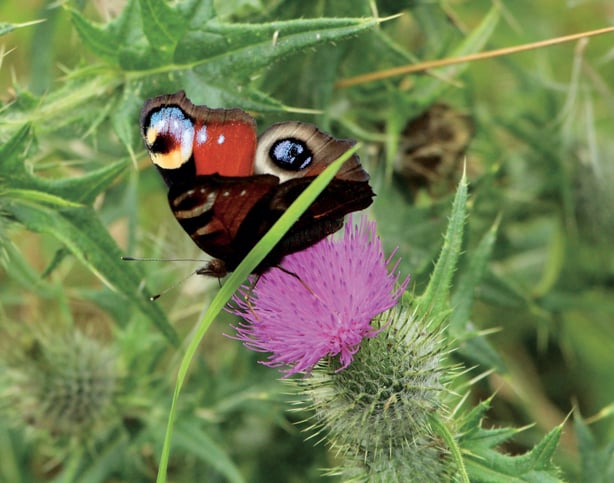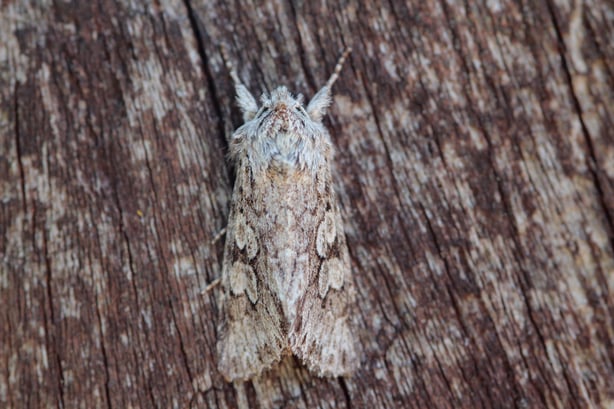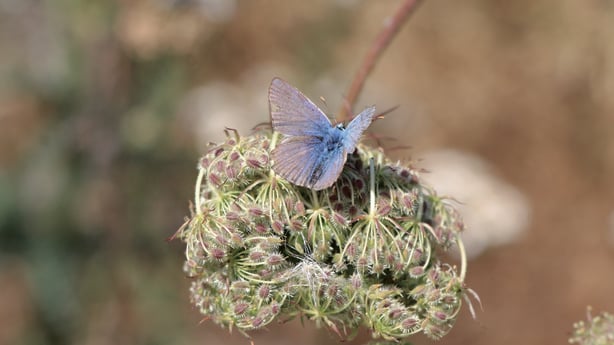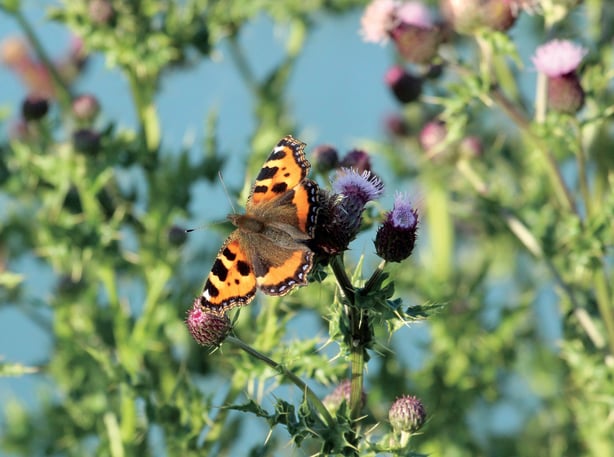Butterflies, moths and so many other insect species need more than a vague 'butterfly-friendly' label on bought-in plants. Mary Reynolds looks at how we can help these ‘flowers’ of the web of life.
Butterflies and moths; it’s hard not to love them, with their flamboyant choices of clothing. They are such magical creatures that I have always felt they are like flowers with wings. Even some of the less colourful moth species remind me of winter snow queens with their magnificent robes and furry headpieces. These little creatures are woven into our mythology and folklore in Ireland.
Associated with transformation and rebirth, butterflies were believed to be visiting souls from the other world, loved ones momentarily coming back to give us messages or warnings, if we only knew how to listen.
They are also an integral part of the web of life that sustains us. The fact that their populations have collapsed should therefore be a concern. Scientists use them as important indicators of the health of an ecosystem. My Dad used to tell me about how a flutter of butterflies would be almost thick enough to block out the sun for a moment when they were migrating. Now if we see one or two of them, we think everything is OK.

Some of you will be old enough to remember what it was like when you opened a window at night-time with the lights on; how the room would be overrun almost instantly with moths, drawn to the light. These days, you only get one occasionally. This may seem like a positive thing, until you realise how important these creatures are to the web of life.
Important pollinators for fruit and vegetables, trees and wildflowers, they are also important food sources for night hunting birds and bats. Most birds feed their young on a diet of 80% larvae and 20% spiders, so the presence of the larval stages of these flying insects is vital for birds to produce a clutter of chicks. Many small mammals completely depend on their presence for survival too.
Larvae of many insect species, including moths, butterflies and beetles, have evolved over millions of years to feed on specific native plant species. These plants provide the necessary nutrients and chemical compounds that the larvae need to grow and develop properly.

Sadly, we are often guided to buy ‘butterfly-friendly’ plants for our gardens that are not native species. When non-native plants are introduced to your garden, they may not have the same nutritional value or chemical compounds that the larvae require, which can lead to reduced survival rates and lower population numbers.
Additionally, non-native plants may not provide the same habitat and shelter that native plants do, which can further impact the survival of larvae and other insects. Therefore, it is important to preserve and promote the use of native plants to support healthy insect populations and maintain a balanced ecosystem, rather than support the garden industry.
Here are some things you can do to create a sanctuary for these vital flying flowers and snow queens.
- Turn off your lights! Artificial lighting is one of the main silent causes of the collapse of nature. For one, it disrupts the natural behaviour of moths, causing them to become disoriented by these "false moons", which can cause them to drop dead from exhaustion. If you must have lights outside, make sure they are amber or red in tone, but it’s best to have none.
- Allow the native wildflowers to emerge from the seed bank. Stop weeding them out, if the situation allows it.
- Plant native flowers to increase the range of diversity in your Ark. Butterflies rely on nectar from flowers as a food source. Planting native flowers such as heather, thistle and clover can provide a good source of nectar for butterflies.
- Avoid using chemicals to kill things. Shift your intention to become a caretaker of your land and its creatures. Pesticides and their ilk are desperately harmful to butterflies and other pollinators, and all life above and below the soil.
- Butterflies and moths need protection from the elements. Creating sheltered areas, such as native hedges or shrubs, can provide a safe haven for them.
- Like us all, moths and butterflies need water to drink, especially during hot weather so provide a shallow dish of water with some stones or pebbles for them to perch on.
- And lastly but most importantly, provide host plants. Larvae have adapted so they are able to survive the chemicals that specific plants produce to deter all of the millions of creatures that want to eat them. They can’t adapt fast enough to the non-native plant palettes we have forced upon them in our gardens, so help them out a bit!

Some examples of plant and insect partnerships.
- Without nettles, you won’t have the opportunity to host the Small Tortoiseshell butterfly, the Peacock, the Comma, or the Red Admiral to name a few, as well as several species of moth, including the Nettle-tap.
- Bird's-foot trefoil – The Common Blue and several species of moth including the Six-Spot Burnet. Depend on this native as a food source for their caterpillars.
- Wild angelica – host for the Orange-Tip butterfly larvae.
- Wild carrot – Small Copper and the Carrot Moth.
- Wild strawberry –Small Pearl-Bordered Fritillary.
- Holly and ivy – Both partnered with the Holly Blue butterfly.
- Our native grasses are given no heed but they are vital larval foods for many insects, including the Meadow Brown, the Speckled Wood, the Wall Brown and the Gatekeeper.

This is a very short list as the real key is to support nature as a whole, to restore a native plant community with as much diversity as possible. The problem with most wildlife conservation efforts in the past was that they focused on preserving one species of creature, to the detriment of many other species.
As the late American naturalist John Muir observed, "When we try to pick out anything by itself, we find it hitched to everything else in the universe."
Mary Reynolds no longer describes herself as a gardener but as a guardian, focusing on restoring native biodiversity to our gardens (and balconies and terraces), enhancing their natural beauty, while encouraging wildlife, working with the seasons and helping conserve native Irish species. wearetheark.org

